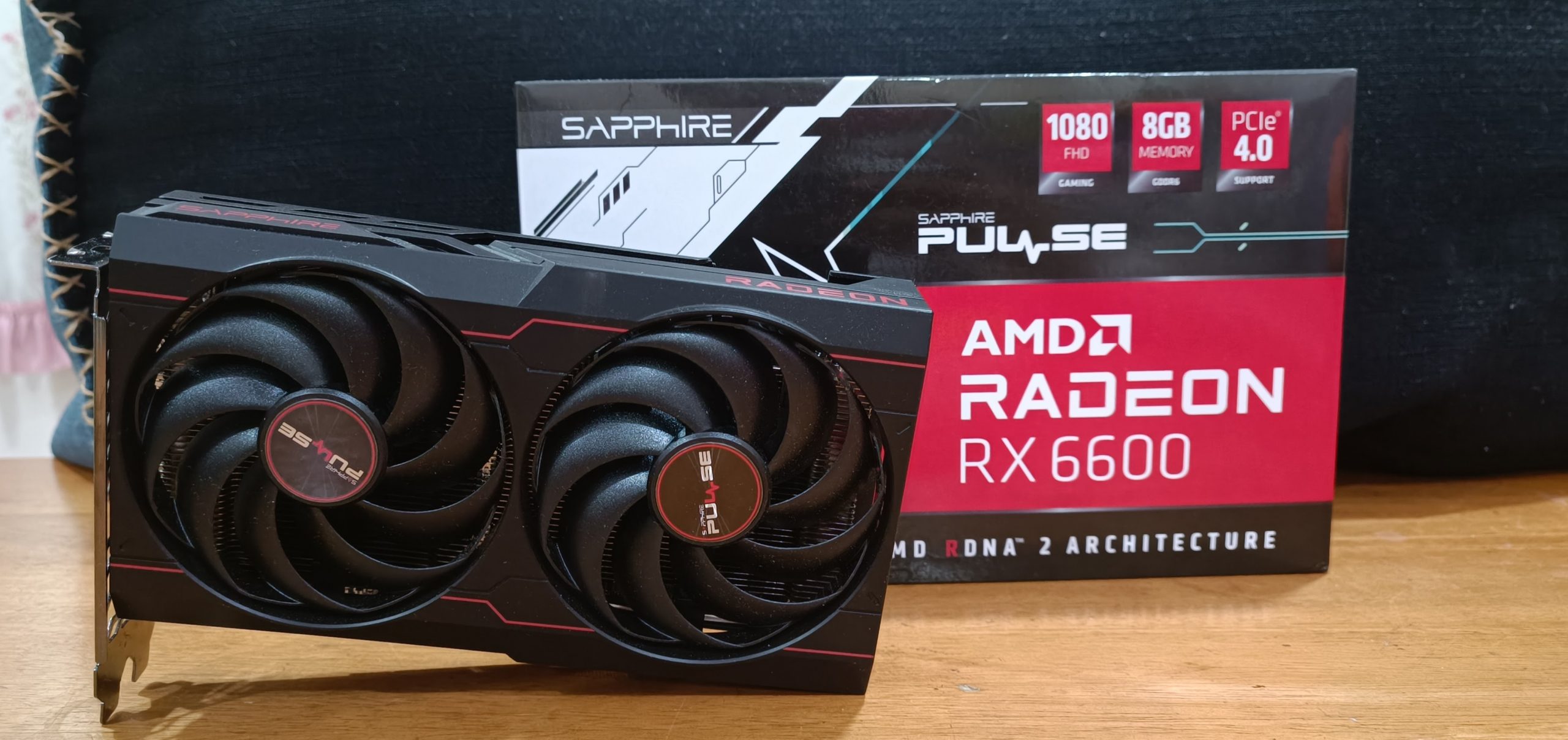Small, mighty 1080P Gaming Card
The Big Navi so far has enjoyed quite a good alternative over its rival, which really stood up slowly since the day it released, garnered much of the attention as a good choice of card for gaming, esports, rendering use and trying it’s best to keep its budget right for the most users today.
Today we will look at the SAPPHIRE PULSE AMD RADEON RX 6600, a card based on the NAVI 23 RDNA 2 architecture and the younger brother of the Radeon RX6600 XT that suits the needs for budgeted gamers alike, that is targeted towards 1080P while maintaining certain quality settings for the games played, AAA titles or esports titles as well. Based on the size of the card, it is meant to fit most MATX, ATX form factors and beyond.
Specifications (Compared to RX 6700 XT)
| RX6700 XT | RX6600 | |
| PCI-E Interface | 4.0 | 4.0 |
| Compute Units | 40 | 28 |
| Memory size | 12GB | 8GB |
| Memory type | GDDR6 | GDDR6 |
| Engine Clock | 2321/2581Mhz | 2044/2491Mhz |
| Memory Speed | 16GBPS | 14GBPS |
| Memory Interface | 192 bit | 128 bit |
| Ports | 1 X HDMI, 3X Displayport | 1 X HDMI, 3X Displayport |
| Power Connector | 2 x 8 Pin | 8 Pin X 1 |
Unboxing & Contents
The Card detail specifications and features
- Ray Tracing Support
- Dual Fan Support
- Protection Back Plate
- FSR support for selected titles
- VR Ready for Applications and Games
- DirectX 12 and Vulkan Support
- 500w minimum power supply required
Test Setup
We will be using the below as a test setup for the SAPPHIRE PULSE AMD RADEON RX 6600 for the purpose of the benchmark, no comparison was used for this round as we have made some changes over our test bench.
| Processor | AMD Ryzen 5 3600X |
| Motherboard | Asrock B550 PG RIPTIDE BIOS P1.30 |
| System Memory | ADATA XPG D41 3200MHz 8GB X 4 |
| Primary Drive | Transcend NVME SSD @ 240GB |
| Secondary Drive | Seagate SSHD 500GB |
| PSU | Thermaltake 650w PSU |
| Operating System | Windows 10 64bit Professional |
Benchmark Scores (With BAR Enabled)


AMD FidelityFX Super Resolution
A great highlight of the latest driver update that we focus on is AMD FidelityFX Super Resolution or FSR, which uses cutting-edge upscaling technologies to help boost your framerates in certain titles and deliver high-quality, high-resolution gaming experiences, without having to upgrade to a new graphics card. Currently there is more than 16 games is supported, but more titles will join in the next few months. GPU wise, as long as you own at least any RX470 above or GTX1060 and above , you will be able to enjoy the features as long the game supports it as well. For more information on FSR , you can visit https://www.amd.com/en/technologies/radeon-software-fidelityfx-super-resolution
Verdict & thoughts
This card is more towards the budget gamer, the ones that really wanted to just play games, get it touch with all the latest titles, set it to Full HD resolution with medium or high settings and game on with no hassles. With its street price of RM2399 , we can recommend this card for those that has plans to build or existingly has system with a Ryzen 5 or 7 to keep things balanced and optimal. Such configuration will give you a good performance between workload and some rendering as well on application such as Adobe Photoshop or Illustrator. Also if you are pairing it with a 144Hz monitor, it will be just nice over eSports titles which will keep you competitive with this Graphics card.
In summary this is a balanced all rounder card, which suits most starter and mid ranger categories and we are happy to see AMD keep coming up with such a GPU that will just be a great start for those who wanted to dive into the PC Master Race.
Pros
- A capable 1080P that is suited for major AAA titles
- Another good choice for VR applications and gaming
- Good FSR support lately from developers
Cons
- Not suited if you are going to play on 4K
- No RGB lights, as its a budget card
Special thanks to AMD for loaning the review unit.








